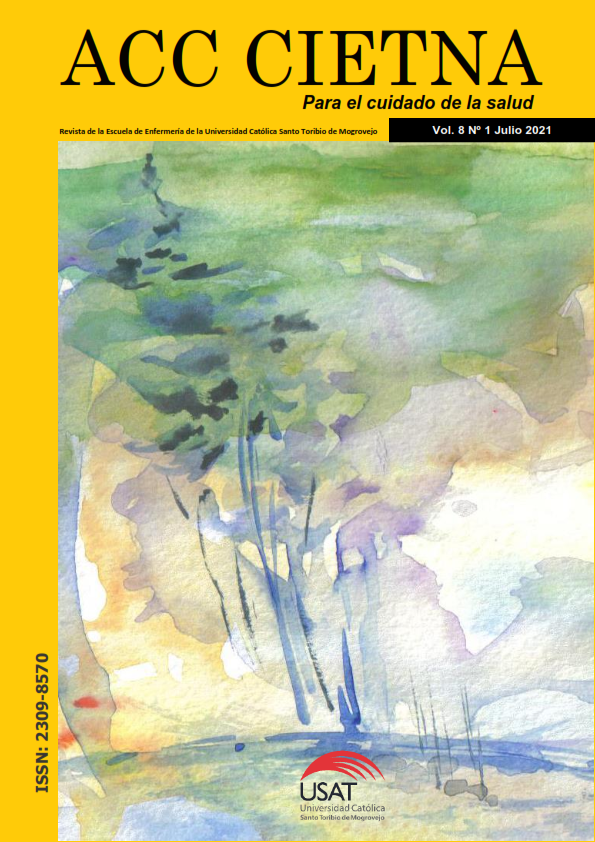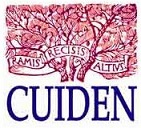Communication between parents and adolescent children on health behaviors
Abstract
Today, the adolescent lives its interpersonal relationships mediated by social networks and socially conducted towards the taking of risk behaviors, motivated from power and acceptance by their peer environment. This circumstance highlights the importance of parents, such as these significant people who will have to introduce in adolescent values and behaviors that promote their biopsychosocial development. Hence, communication between parents and children is a key and fundamental part, since assertive and affective dialogue will facilitate the exchange of experiences that will be useful to the adolescent when making decisions. The detail before this, is that academic and scientific evidences that this communication is not carried out, leaving the adolescent devoid of elements that would contribute to the growth and personal development of it. So in the following essay, a reflection on communication between parents and adolescent children is deployed regarding health behaviors.
Keywords: parents, adolescence, communication, assertiveness
Downloads
References
Palacios X. Adolescencia: ¿una etapa problemática del desarrollo humano? Revista Ciencias de la Salud [Internet]. 2019 [Consultado 10 Mar 2021]; 17(1): 5-7. Disponible en https://dialnet.unirioja.es/servlet/articulo?codigo=6844569
Salas F. Caracterización de factores implicados en las conductas de riesgo en adolescentes. ABRA [Internet]. 2018 [Consultado 10 Mar 2021]; 38(56): 1-6. Disponible en: https://doi.org/ 10.15359/abra.38-56.3
Álvarez-Trujillo E, Cornelio-Landero R, Macías-Murguía G. Alternativas de intervención en conductas de riesgo en estudiantes de bachillerato. Revista Innova Educación. 2020 [Consultado 10 Mar 2021]; 2(4): 638-657. Disponible en: https://www.revistainnovaeducacion.com/index.php/rie/article/view/93
Bandura A. Como afrontamos los cambios de la sociedad actual. España: Desclee de Brouwer; 1999. 279p.
Prado G, Pantin H, Huang S, Cordova D, Tapia MI, Velazquez MR, et al. Effects of a Family Intervention in Reducing HIV Risk Behaviors Among High-Risk Hispanic Adolescents. Arch Pediatr Adolesc Med [Internet]. 2012 [Consultado 12 Mar 2021]; 166(2): 127-33. Disponible en: https://doi.org/10.1001/archpediatrics.2011.189
Mosquera J, Mateus J. Conocimientos, actitudes y prácticas sobre métodos de planificación familiar, VIH/SIDA y el uso de los medios de comunicación en jóvenes. Colombia médica [Internet]. 2003 [Consultado 12 Mar 2021]; 34(4): 206-12. Disponible en https://colombiamedica.univalle.edu.co/index.php/comedica/article/view/275
McKay M, Alicea S, Elwyn L, McClain Z, Parker G, Small L, et al. The Development and Implementation of Theory-Driven Programs Capable of Addressing Poverty-Impacted Children’s Health, Mental Health, and Prevention Needs: CHAMP and CHAMP+, evidence-Informed, Family-Based Interventions to Address HIV Risk and Care. Journal of Clinical Child and adolescent psychology, the official journal for the Society of Clinical Child and Adolescent Psychology, American Psychological Association, Division 53 [Internet]. 2014 [Consultado 12 Mar 2021]; 43(3): 428-41. Disponible en: https://doi.org/10.1080/15374416.2014.893519
Osorio-Leyva A, Álvarez-Aguirre A, Hernández-Rodríguez V, Sánchez-Perales M, Muñoz-Alonso L. Relación entre asertividad sexual y autoeficacia para prevenir el VIH/SIDA en jóvenes universitarios del área de la salud. RIDE. Rev. Iberoam. Investig. Desarro. Educ [Internet]. 2017 [Consultado 12 Mar 2021]; 7(14): 1-14. Disponible en: https://doi.org/10.23913/ride.v7i14.264
Fernández-Tapia S. Determinantes sociales que condicionan la actividad sexual precoz de los adolescentes. Revista Peruana de Ciencias de la Salud [Internet]. 2020 [Consultado 14 Mar 2021]; 2(3):161-9. Disponible en: https://doi.org/10.37711/rpcs.2020.2.3.194
Friedman, M. Family nursing. Theory and assessment. Introduction to the family, The United States of America: Appleton Century Crofts; 1981.
Bárcena-Gaona S, Guevara-Benítez Y, Rodríguez-Gutiérrez M. Programa de intervención para promover la comunicación sobre sexualidad en padres de hijos con discapacidad intelectual. Psicología y salud [Internet]. 2020 [Consultado 14 Mar 2021]; 30(2): 173-87. Disponible en: https://doi.org/10.25009/pys.v30i2.2652
Kusheta S, Bancha B, Habtu Y, Helamo D, Yohannes S. Adolescent-parent communication on sexual and reproductive health issues and its factors among secondary and preparatory school students in Hadiya Zone, Southern Ethiopia: institution based cross sectional study. BMC Pediatr [Internet]. 2019 [Consultado 14 Mar 2021];19 (9): 2-11. Disponible en: https://doi.org/10.1186/s12887-018-1388-0
Koren A. Reproductive Health for Teens: Parents Want In Too, Journal of Sex & Marital Therapy [Internet]. 2019 [Consultado 18 Mar 2021]; 45(5): 406-13. Disponible en: https://doi.org/1080/0092623X.2018.1549635
Palacios J, Álvarez M. Consumo de drogas asociadas al contagio de infecciones de trasmisión sexual en jóvenes de México. Health and Addictions [Internet]. 2018 [Consultado 14 Mar 2021]; 18(2): 111-20. Disponible en: https://doi.org/ 10.21134/haaj.v18i2.384
Liu T, Fuller J, Hutton A, Grant J. Factors shaping parent–adolescent communication about sexuality in urban China, Sex Education [Internet]. 2017 [Consultado 18 Mar 2021]; 17 (2): 180-94. Disponible en: https://doi.org/10.1080/14681811.2016.1276897
Bangpan M, Operario D. Understanding the role of family on sexual-risk decisions of young women: A systematic review. AIDS Care [Internet]. 2012 [Consultado 18 Mar 2021]; 24(9): 2-10. Disponible en: https://doi.org/10.1080/09540121.2012.699667
Rouvier M, Campero L, Walker D, Caballero M. Factors that influence communication about sexuality between parents and adolescents in the cultural context of Mexican families. Sex Education [Internet]. 2011 [Consultado 18 Mar 2021]; 11(2): 175-91. Disponible en: https://eric.ed.gov/?id=EJ925059
Wilson E, Koo H. Mothers, fathers, sons, and daugthers: gender differences in factors associated with parent-child communication about sexual topics. Reproductive Health [Internet]. 2010 [Consultado 18 Mar 2021]; 7(31): 1-9. Disponible en: https://doi.org/10.1186/1742-4755-7-31
Kuo C, Atujuna M, Mathews C, Stein D, Hoare J, Beardslee W, et al. Developing family interventions for adolescent HIV prevention in South Africa. Aids Care [Internet]. 2016 [Consultado 18 Mar 2021]; 28(1): 1-4. Disponible en: https://doi.org/10.1080/09540121.2016.1146396
Vig J, Miller K, Chirwa-Motswere C, Winskell K, Stallcup E. Involving parents from the start: Formative evaluation for a large RCT with Botswana Junior Secondary School students. HHS Public [Internet]. 2015 [Consultado 18 Mar 2021]; 15(1): 9-15. Disponible en: https://doi.org/10.2989/16085906.2015.1135295
Smith M, Liehr P. Middle range theory for nursing. NY: SpringerPublishing Company; 2018.
Alberti R, Emmons M. Viviendo con autoestima: como fortalecer con asertividad lo mejor de tu persona. México: Pax; 1990.
Fensterheim H, Baer J. No diga Si cuando quiera decir No. Barcelona: Grijalbo; 1975.
Rathus S. A 30-item schedule for assessing assertive behavior. Behavior Therapy [Internet]. 1973 [Consultado 18 Mar 2021]; 4(3): 398-406. Disponible en: https://doi.org/10.1016/S0005-7894(73)80120-0
Aduna A, Bolaños J. Curso para reducir la ansiedad ante la participación en grupo (escolar y social). México: Editorial Trillas; 1996.
Cooley M. Interests of assertivenss trainees. Journal of Counseling Psychology [Internet]. 1979 [Consultado 18 Mar 2021]; 26(2):173-175. Disponible en: https://doi.org/10.1037/0022-0167.26.2.173
Rifá R, Olivé C, Lamoglia M. Lenguaje NIC para el aprendizaje teórico-práctico en enfermería. España: ELSEVIER; 2020
Los autores conservan los derechos de autor.
Esta obra está bajo una licencia internacional Creative Commons Attribution 4.0.
Los artículos publicados por la revista científica "Acc Cietna: para el cuidado de la salud" de la Escuela de Enfermería de la Universidad Católica Santo Toribio de Mogrovejo, Chiclayo, Perú están sujetos a una licencia internacional Creative Commons Attribution CC BY 4.0.




















 BIBLIOTECA USAT
BIBLIOTECA USAT